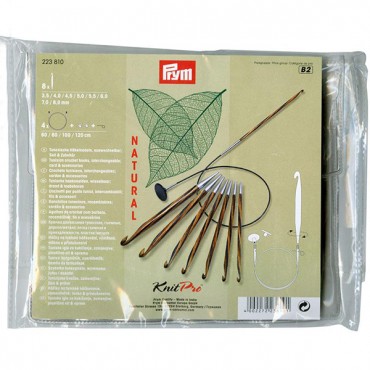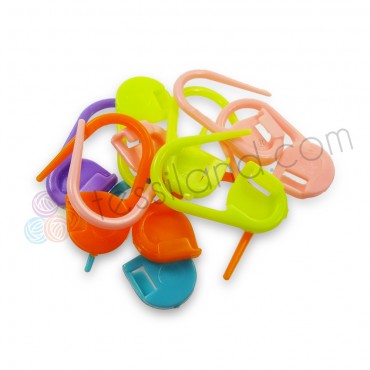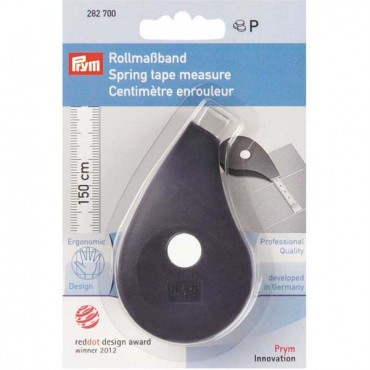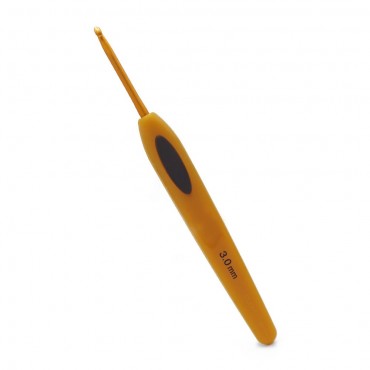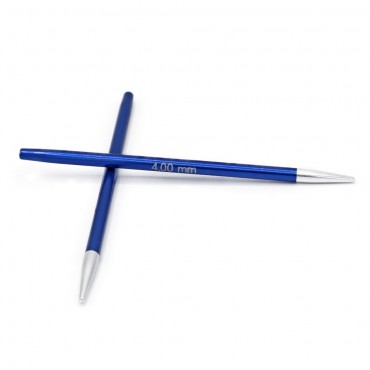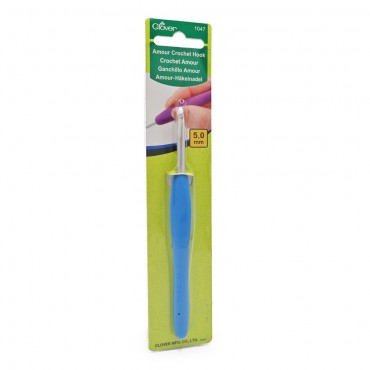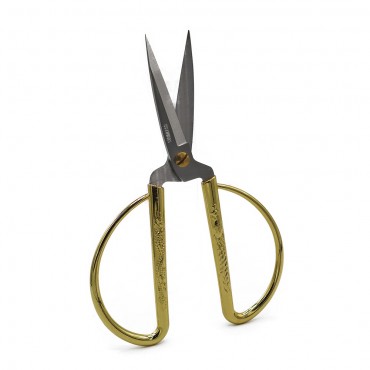Two bags, two styles, one single trend. The Japanese knot takes over summer 2025 with two irresistible crochet...
0 prodotti 0
Your cart is empty
Search in blog
Blog categories
Latest posts
-
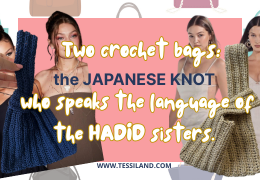 Two crochet bags: the Japanese knot tutorial that speaks the language of the Hadid sisters – summer 2025 editionRead more
Two crochet bags: the Japanese knot tutorial that speaks the language of the Hadid sisters – summer 2025 editionRead more -
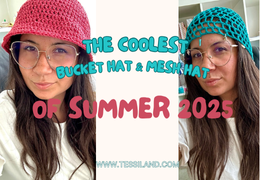 Crochet under the sun: summer 2025 fashion to show off with your best friend (handmade hats included!)27/07/2025Read more
Crochet under the sun: summer 2025 fashion to show off with your best friend (handmade hats included!)27/07/2025Read moreTwo crochet hats perfect for summer: a bucket hat and a mesh hat — fresh, trendy, and easy to make with our free...
-
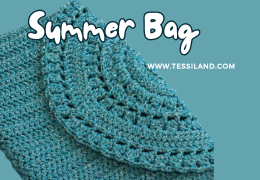 The coolest clutch of summer 2025 — and you can make it in 2 must-have colors. Chiedi a ChatGPT23/07/2025Read more
The coolest clutch of summer 2025 — and you can make it in 2 must-have colors. Chiedi a ChatGPT23/07/2025Read moreTwo irresistible colors, one project: the most wanted crochet clutch of summer 2025 is easy to make with the...
-
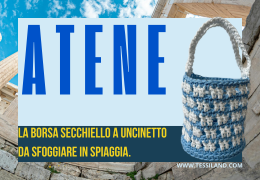 Athens the crochet bucket bag to show off at the beach20/07/2025Read more
Athens the crochet bucket bag to show off at the beach20/07/2025Read moreLast project of our Summer Crochet series! Athens is the crochet bucket bag inspired by the colors and elegance of...
-
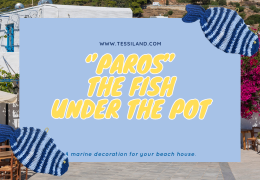 Paros the trivet fish a seaside-style decoration for your beach house and beyond17/07/2025Read more
Paros the trivet fish a seaside-style decoration for your beach house and beyond17/07/2025Read moreWant to bring a touch of summer and seaside style into your kitchen? With our crochet tutorial, you can make Paros –...
Popular posts
-
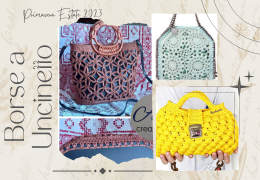 Crochet bags, the models for spring-summer.29/04/2023One of the most searched accessories on the web, patterns, tutorials, ideas, projects, accessories, here's how to...Read more
Crochet bags, the models for spring-summer.29/04/2023One of the most searched accessories on the web, patterns, tutorials, ideas, projects, accessories, here's how to...Read more -
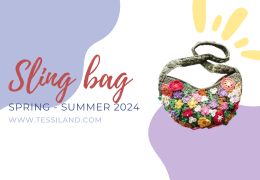 Crochet bags for spring summer 2024. 5 models of handmade sling bags.05/04/2024Discover the latest trends for Spring/Summer 2024 with our exclusive guide to 5 crochet sling bag models. Perfect for...Read more
Crochet bags for spring summer 2024. 5 models of handmade sling bags.05/04/2024Discover the latest trends for Spring/Summer 2024 with our exclusive guide to 5 crochet sling bag models. Perfect for...Read more -
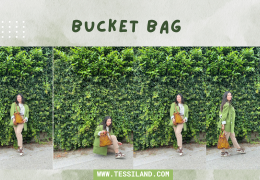 The Crochet Net Bucket Bag: A Trendy Accessory for 202401/06/2024Learn how to make a crochet net bucket bag with our simple and detailed tutorial. Use elastic cord, a size 5 crochet...Read more
The Crochet Net Bucket Bag: A Trendy Accessory for 202401/06/2024Learn how to make a crochet net bucket bag with our simple and detailed tutorial. Use elastic cord, a size 5 crochet...Read more -
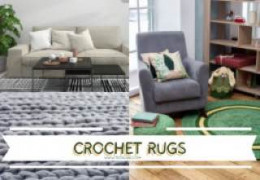 Crochet rugs, a passion that is becoming a trend.21/01/2024In this article, dive into the art of crochet rugs and discover how to create unique and personalized pieces for your...Read more
Crochet rugs, a passion that is becoming a trend.21/01/2024In this article, dive into the art of crochet rugs and discover how to create unique and personalized pieces for your...Read more -
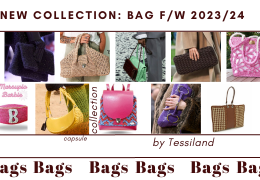 From runways to street style: the trendiest crochet bags.06/09/2023Are you also passionate about handmade items and want to create your own capsule collection of crochet bags? Here are...Read more
From runways to street style: the trendiest crochet bags.06/09/2023Are you also passionate about handmade items and want to create your own capsule collection of crochet bags? Here are...Read more
What Is Microfiber
Frequently Asked Questions about Microfiber
- Do you have Microfiber?
- What is hypoallergenic Microfiber?
- Do you have Microfiber for babies?
- Where can I find natural Microfiber?
- But is microfiber better than acrylic?
Let's try to sort things out and clarify right away that MICROFIBER IS NOT a fiber!
MICROFIBER "DOES NOT EXIST"!
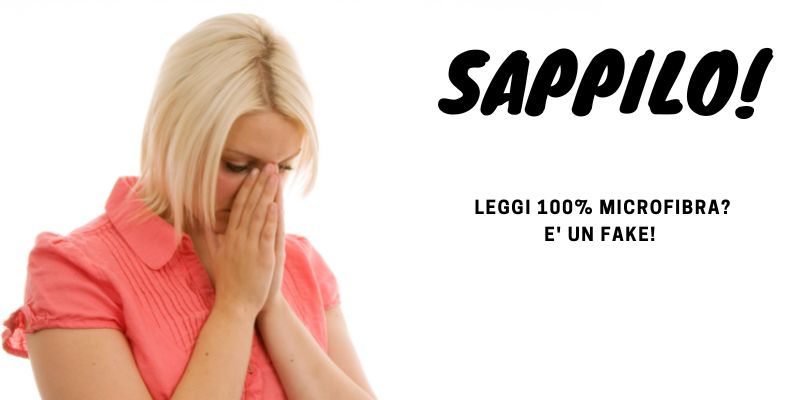
So what is Microfiber?
"Microfiber" is simply a characteristic of a fiber, which when followed by this adjective defines its fineness (conventionally fibers with a linear mass between 0.3 and 1.0 dtex - a textile measurement unit corresponding to 1 gram per 10 kilometers).
So it's an adjective that can be preceded by a fiber: for example, Microfiber Acrylic determining that the fiber is finer than standard. This characteristic makes the product much softer, but it doesn't elevate it to a natural product or even to a product miraculously suitable for babies. For these evaluations, some clarifications must be made:
Without going too technical, so when we read on a yarn ball 100% Microfiber? Well, not only is it incorrect but it absolutely does not comply with regulations. To be correct, the term microfiber must be preceded by the polymer that composes the fiber; for example, 100% Nylon Microfiber and NEVER 100% Microfiber. A 100% Microfiber product "does not exist"!
100% MICROFIBER
Well, in the world of knitting yarns (so those suitable for Crochet and Knitting), very, indeed too often, labels are seen that not only do not comply with regulations but often leverage terms that can create confusion in order to overvalue a product.
This "modus operandi" is often used by merchants who are so-called "unscrupulous" to confuse the buyer who sees Microfiber in some special fiber suitable for babies, for example, or - even worse - some hypoallergenic fiber or even worse NON-ALLERGENIC (we will talk about this topic in a future article).
So? Is microfiber a scam?
If we don't want to talk about a scam, we can certainly talk about a rather serious inaccuracy that tends to make you believe in "who knows what", to confuse the consumer who thinks they are buying a "super fiber" when they are simply buying an acrylic.
Just a few days ago, a question came up under a YouTube video explaining new yarns:
- Lady: "Is it hypoallergenic? I use 100% cotton or microfiber, I'm allergic to acrylic, or mixed yarns."
- Response: "No, madam, there is no hypoallergenic yarn, at most it could be hypoallergenic. But we also have to inform you that since you are allergic to acrylic, you are certainly buying a product with polymers (so Acrylic) that is erroneously called Microfiber!"
There you go, this is to say how dangerous and incorrect it is not to provide the right information on labels!
So we recommend paying close attention to the information provided, and if in doubt, it's always best to try to clarify with the seller!
But ultimately: should "microfiber" be avoided?
No way! On the contrary! Polymers and in particular Acrylic Microfiber have evolved a lot in recent years and have characteristics that are difficult to find in other types of yarn: incredible softness, versatility, and value for money are just some of the most important!
- SOFTNESS: Technologies in synthetic yarn production have made tremendous strides, and today we are able to produce products with very low environmental impact with those characteristics that make this product one of the most sought after on the market! A softness to the touch that over time will leave you wondering if it's an Acrylic yarn or a very refined wool!
- VERSATILITY: Truly adaptable to an infinity of projects; from blankets to clothing items, from accessories to bags, creations with Acrylic Microfiber are truly growing on our social media (Better than Knitting on Facebook, @tessiland on Instagram and TikTok just a few of our social media where you can see the many creations of our followers)!
- Value for Money: With an increasingly vast color range, Tessiland offers many products in the Top Quality Acrylic section where you can find various types, from finer to thicker, printed and solid colors, up to lurex!
WHICH ONE SHOULD I CHOOSE?
The most famous in Italy is undoubtedly the BRAVISSIMO, available in the famous 500-gram format and in the 50-gram format in the same colors to allow you to modulate the quantities as you like. But the famous yarn ball is also available in the SHADED version: the BRAVISSIMO BATIK, and very recently also in the version with lamé: the Bravissimo Lurex
And if you need something finer?
Tessiland also has finer acrylics in stock such as the CHUCK also available in shaded version CHUCK BATIK and in lurex version CHUCK LUREX.
Not fine enough for me, I want it for filet!
Even for filet, Tessiland has presented an acrylic microfiber that is perfectly suited for all those works like doilies, curtains, and those Home Decor articles that also require frequent washing, and we're talking about Teck Cotton.
Let's see what can be made with:
Bravissimo:
Definitely the most used by far with a very wide range of more than 50 shades and growing every season. The success of Bravissimo is the result of a great value for money for a product that adapts to everyday life! 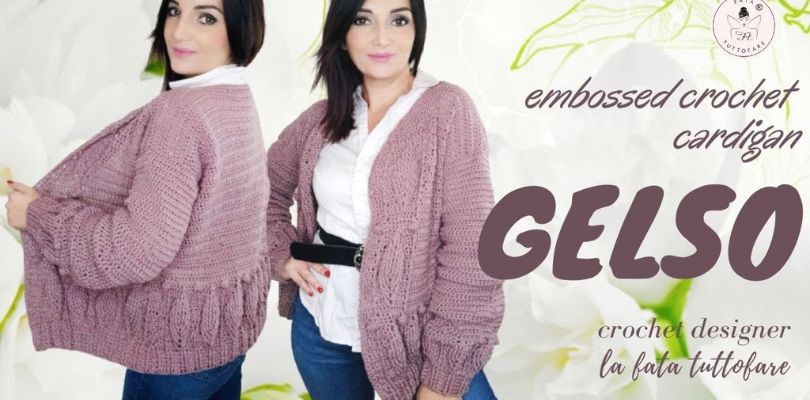
Bravissimo Batik:
A novelty just arrived on the Tessiland website, the famous yarn ball in Italy is now also shaded in many different variants always evolving.
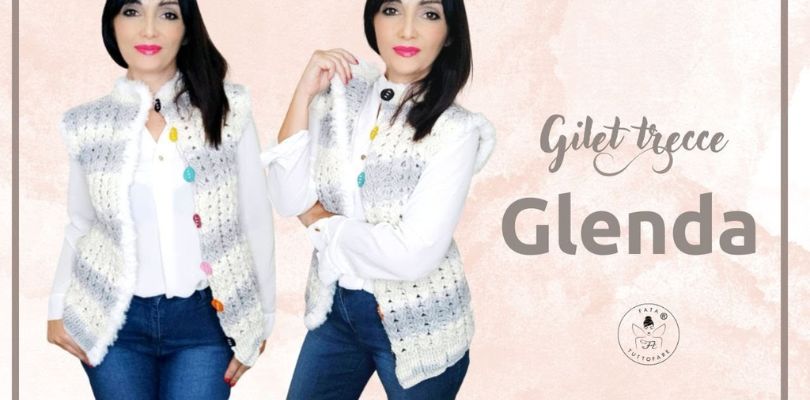
Bravissimo Lurex:
The yarn ball for those who like to be a little "chic". A delicate metallic fiber expertly woven into the fiber to be comfortable even on the most sensitive skins.
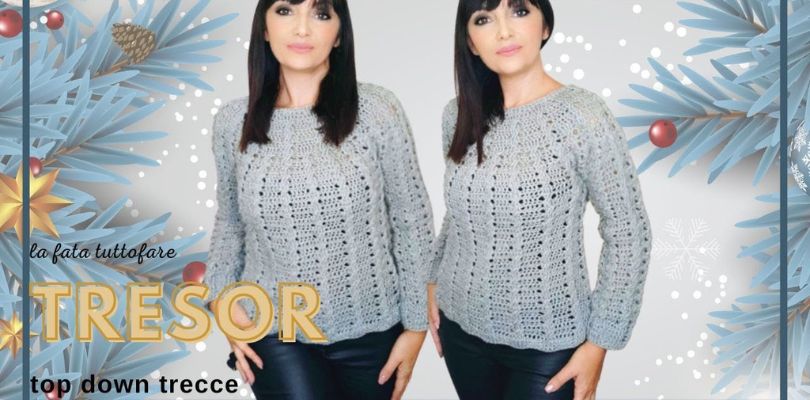
Chuck plain:
The comfort of Bravissimo but in a finer version. This yarn is very trendy because it is highly appreciated by plus sizes looking for a thinner product.
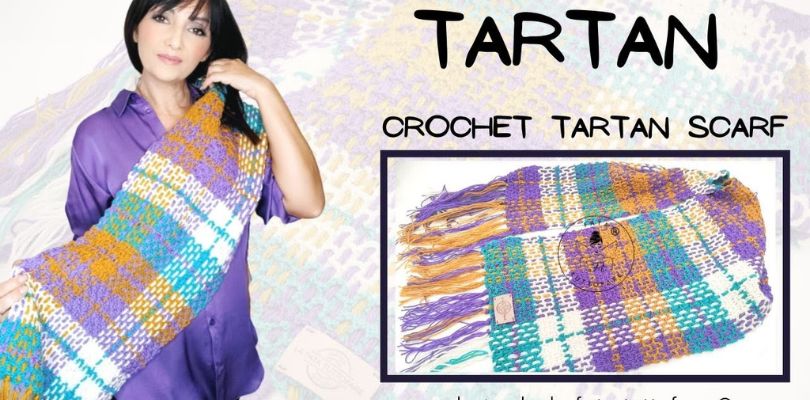
Chuck Batik:
The plain Chuck version is flanked by the version with shades ranging from the softest and most romantic to the most decisive and personality-filled to ensure that even with simple stitches, you can get great-looking items.
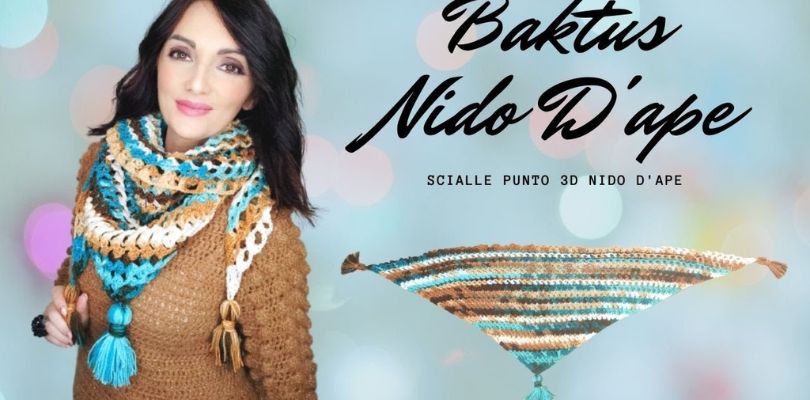
Chuck Lurex:
Want elegance without sacrificing comfort? And also for Chuck, there is the super soft lurex version suitable even for the most sensitive skins with the infinite advantage of having the practicality of an acrylic Microfiber.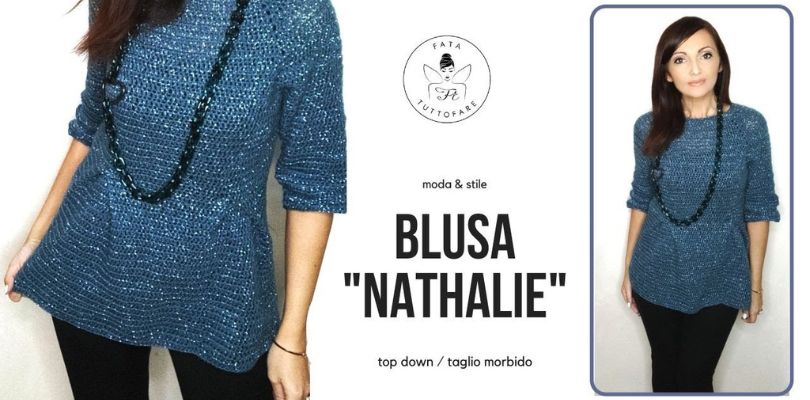
And the acrylic Microfiber for filet?
As mentioned, acrylic microfiber can also be adapted for classic crochet and filet work. Naturally, a thread specially designed for this purpose is needed, one that has the structure of cotton but the workability and resistance of acrylic: so the possibility of multiple washes without worrying about yellowing or damaging the product! Imagine a patchwork sofa cushion cover: you'll need a thin and shiny thread that until yesterday was necessarily a mercerized cotton thread, precisely until yesterday because Tessiland, the first in Europe to present such a yarn, enables you to make these little works with a cost that is up to 1/5 of brand cottons! With Teck cotton, you can also make jewelry and accessories like the one we show you below: 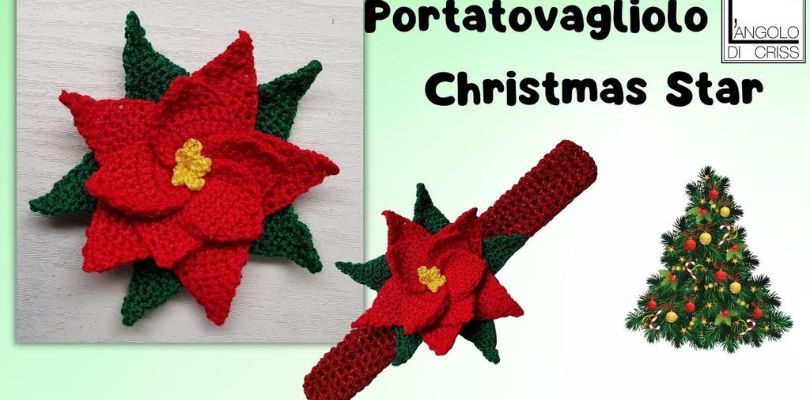
Microfiber Deep Dive: Revolutionary Techfibers
Microfiber, a term that captures the essence of modernity in the textile world, represents a true revolution in materials. These techfibers, such as Polyester, Nylon, and Acrylic, have been developed through advanced microfiber processes, which allow for extreme fineness, measured in Dtex, a unit that highlights the lightness and thinness of these fibers.
Synthetic fibers have surpassed the limits of natural fibers in terms of absorption, strength, and maintainability, finding use in a wide range of applications: from sportswear and intimate apparel, to eyeglass wipes and shoes. Evolution has led to the development of acrylic fibers and hybrid fibers, combining the best of polymers like Polyamide and Polypropylene, to create woven microfiber, a versatile fabric that adapts to various needs.
Microfiber FAQs
1. What is microfiber?
Microfiber is a type of fabric made with extremely fine synthetic fibers, less than one dtex. Its composition may include polyester, nylon, or acrylic. These fibers offer exceptional softness, strength, and absorbency.
2. How is microfiber made?
Microfiber is made through weaving or knitting processes that exploit the fineness of the fibers to create fabrics with specific characteristics, such as extreme softness or high absorbency, suitable for various uses.
3. What are the characteristics of microfiber?
The distinctive characteristics of microfiber include extraordinary softness, high absorbency, durability, and resistance to wrinkles and abrasions, making it ideal for clothing, cleaning, and more.
4. In which sectors is microfiber used?
Microfiber finds application in various sectors, from sportswear and underwear to cleaning products, home furnishings, filters, and accessories such as bags and shoes, thanks to its versatile properties.
5. What is the history of microfiber?
Developed in the 1970s, microfiber represented a breakthrough in synthetic material technology, offering superior alternatives to natural fibers in terms of performance and practicality.
6. What are the applications of microfiber?
In addition to clothing and home decor, microfiber is used in filters, cleaning products, and the footwear industry, demonstrating a wide range of applications thanks to its unique properties.
7. How do you clean microfiber?
Microfiber can be cleaned with water and, if necessary, a mild detergent, avoiding fabric softeners and bleaches that can damage the fibers and reduce their efficiency.
8. What are the advantages and disadvantages of microfiber compared to cotton?
The advantages include superior softness, absorbency, and durability. However, cotton is often preferred for its naturalness and breathability. The choice depends on specific needs and personal preferences.
9. What are the different types of microfiber?
There are various types of microfiber, classified based on the polymer used (e.g., polyester, nylon) and the production technique, influencing softness, strength, and other properties.
10. How is microfiber produced?
Microfiber production involves spinning processes that transform polymers into extremely fine threads. These threads are then woven or knitted to create fabrics with the desired performance characteristics.
This overview of microfiber highlights its importance in the modern world, offering innovative and sustainable solutions that meet the growing demands for performance, comfort, and versatility in various application sectors.
Related products
-
P-223810-Knit Pro Set-Tunisian hook set - interchangeable
Price: €68.90Set di 8 Unicinetti tunisini in legno intercambiabiliMisure:... -
Stitch Marker Plastic pieces 10
Price: €0.70Stitch markers for holding suspended knits in plastic safety pin shape.... -
P-282700-Spring tape measure - Ergonomics
Price: €9.10Metro per sarti a nastro retraibile. Design ergomico -Pratico e... -
Hook Soft Touch Clover n.3
Price: €4.90Aluminum crochet hook with resin handle. Clover Soft Touch hooks are... -
Ferri Circoli Corti KnitPro Zing 4
Price: €9.40 -
Hook Amour Clover n 5
Price: €6.90The Clover Amour crochet hook has an ergonomic design that helps prevent... -
Related posts
 Condividi con noi lo scatto perfetto per tua creazione handmade.
Condividi con noi lo scatto perfetto per tua creazione handmade.


